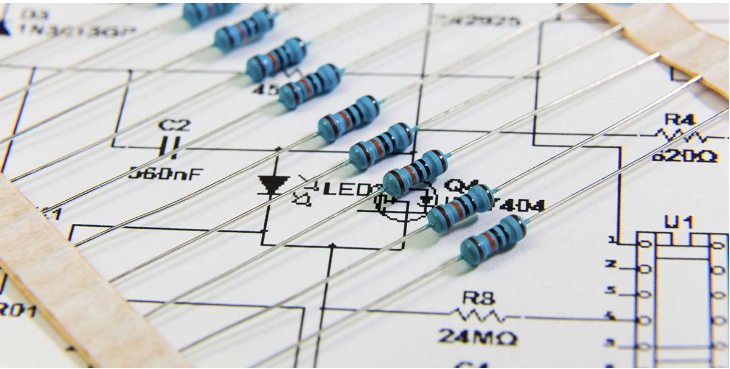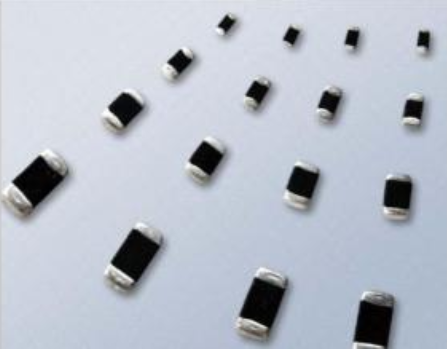Film Resistors' Construction and Features
In a film resistor, the resistive material is a very thin coating of carbon ,metal or metal oxide on an insulating substrate, such as ceramic or glass. The value of the resistance is determined by the thickness of the film and the amount of carbon or metal in it. These resistors are available with very accurate and stable values.
Apart from shunt resistor, surface-mount resistors are almost always film resistors. These resistors have no leads at all, so LS is very low. The film is deposited on a ceramic sheet. Because of their extremely small size, surface-mount resistors have very low power ratings — from 1/10 to 1/4 watt.

A drawback of film resistors is that they are unable to handle large amounts of power because the film is so thin. Overloads can also damage the film by creating “hot spots” inside the resistor, changing its value permanently. The value of film resistors is sometimes adjusted before sealing by cutting away some of the film with a laser, a process called trimming.

If the film is deposited on the inside of a tube, the trimming process creates a coil-like current path that raises the LS of the resistor. If your circuit operates at high frequencies, be sure the resistors you select have a low value of LS.
Latest News
- Resistor's role in measuring and correcting LED,,,
- Single through-hole resistors' characteristics ,,,
- Why shunt resistors for current sense applicati,,,
- Metal-film resistors with small size, high resi,,,
- 36W High-Current Shunt Resistors MMS8420,,,
- 1W Surface Mount Resistor MPR1206,,,
- An Overview of Microhm Electronics' Resistor Pr,,,
- More anti-sulfur resistors used in harsh envir,,,
- Resistance changes with temperature,,,
- 140W TO247 High Power Heatsinkable Resistor,,,
- MMS5930 is ideal for current sensing in industr,,,
- Shunt resistors selection for engineers' design,,,
- Considerations for choosing precision resistors,,,
- Ceramic Encased Cement Resistors NWH Series for,,,
- Resistors for Passive Balancing in Battery-Pow,,,
Hot Articles
- Microhm will take part in 10th Automotive World,,,
- Thanks for Visiting Microhm's Booth E5-5706 in ,,,
- Resistors in Short Supply: Blame Cars,,,
- New lunch: High Power Precision Shunt Resistor,,,,
- How to Test a Resistor,,,
- Innovative Technology, Future Electric: Electri,,,
- What is Precision Resistors?,,,
- SMD Resistors Sizes and Packages,,,
- The Construction and Features of Metal Film Res,,,
- What is a TO-220 Resisor?,,,
- Hot Selling Products: Precision Shunt Resistors,,,
- How to Calculate the Equivalent Resistance Valu,,,
- What is a Fixed Resistor?,,,
- Resistors in LED Circuits,,,
- Resistors Types and Materials Overview,,,
Resistance applications
- Industrial Roberts Applied to Solar Photovoltai,,,
- The Measurement Accuracy of Automotive Shunt is,,,
- The Main Application for High Precision and Low,,,
- Why Zero-Ohm Resistors?,,,
- Urbanization Development Bringing the Transform,,,
- Precision Resistors' Construction and TCR,,,
- Carbon Film Resistors' Features and Application,,,
- Miniature future for passive electronic compone,,,
- BMS for New Energy Vehicle,,,
- Difference Between High Precision Resistors and,,,
- Shunt Resistor MMS8420 for High Current Stable ,,,
- Select the Right Resistor for Harmonic Filterin,,,
- The Four Important Functions of Alloy Resistors,,,
- Heater Blower Motor Resistor in Air Conditioner,,,
- Surface Mount Resistor's Size and Package ,,,
